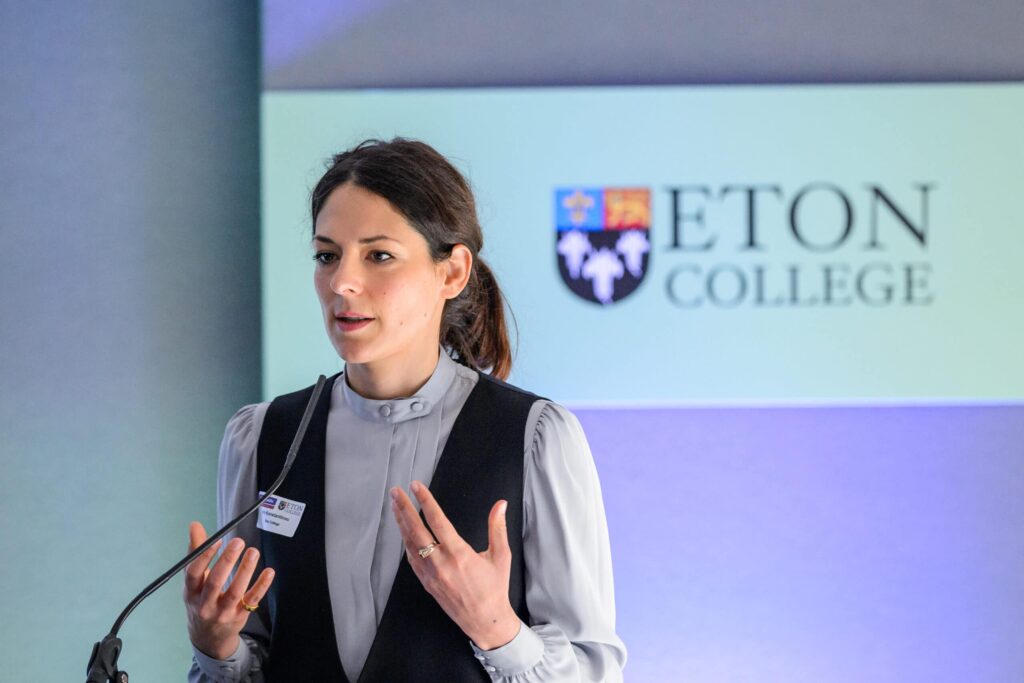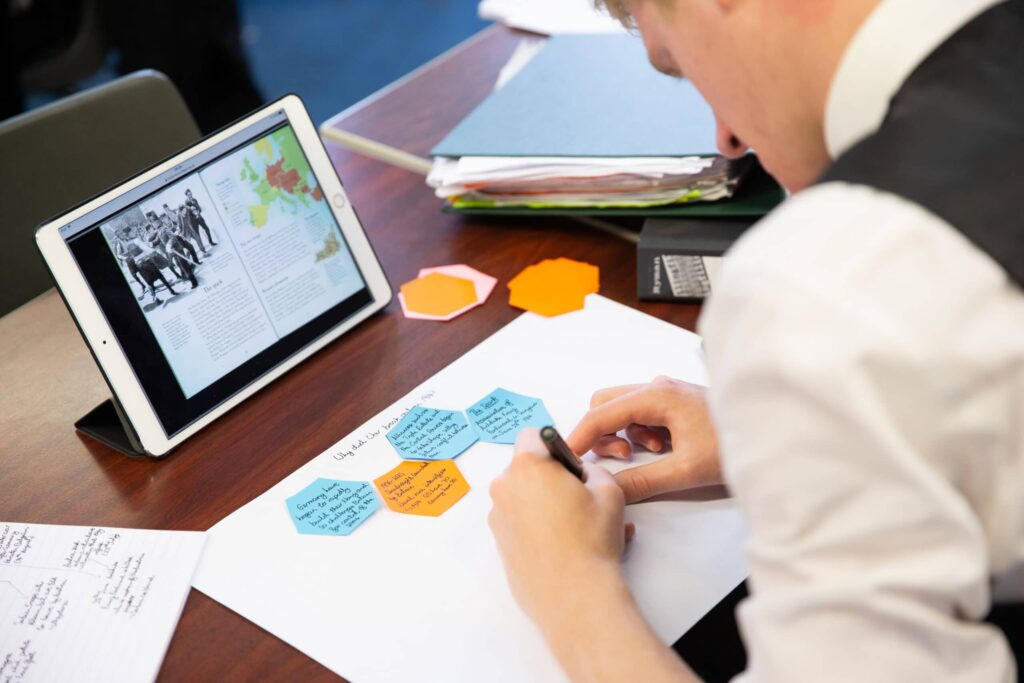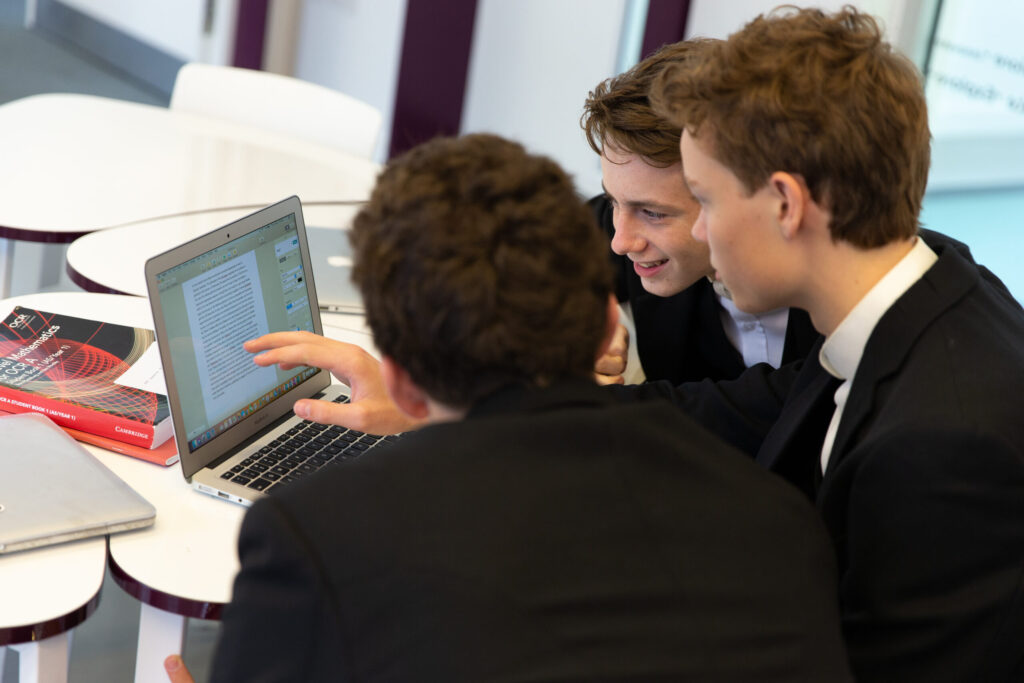This week’s blog post is by Pauline Herbommez, teacher of French at Eton College. The post is based on a research project Pauline completed last year for the International Boys’ Schools Coalition (‘IBSC’) Action Research Program.
This blog post discusses how tutors can easily introduce ‘Walk and Talk’ sessions into weekly meetings with tutees, to reinforce healthy social interactions and increase students’ well-being. During a Walk and Talk session, students meet outside, in pairs, and walk for a predetermined amount of time while talking to each other using coaching skills.
The post is divided into three sections:
1. Research context
2. Research findings
3. Conclusions
This research was conducted in a boys’ boarding school, so the claims are limited to boys rather than all students. The research focuses on three main works: John Campbell & Christian van Nieuwerburgh’s, Leader’s Guide to Coaching in Schools: Creating Conditions for Effective Learning (Corwin, 2017); Adam J. Cox’s Cracking the Boy Code: How to Understand and Talk with Boys (New Society Publishers, 2018); and Leonard Sax’s Why Gender Matters: What Parents and Teachers Need to Know about the Emerging Science of Sex Differences (Second Ed; Harmony, 2017).
1. Research context
A student’s demanding timetable and the context of a boarding school environment allows little time for safe conversations; yet to be healthy, students need a forum to exercise their emotional voice. Looking into the specificity of male emotional intelligence by reading literary work that examines male adolescence, called ‘boyology’ literature, I learned that:
- ‘Being observed having strong emotions is a point of sensitivity and discomfort for many boys’ (Sax 2017, p. 34).
- Boys seem to think that they can make a problem disappear by refusing to acknowledge it. Sax calls this phenomenon ‘magical thinking’ (Sax 2017, p. 32).
- ‘Just because adults want a stronger relationship […] doesn’t mean boys want the same. Mostly they are a little scared of getting too close to adults and would rather remain somewhat undercover’ (Cox 2018, p. 1).
- When faced with a problem, boys ‘sense the feelings for a moment, then tune out of the emotions and switch to other brain areas that try to solve the problem that’s creating the disturbance’ (Gurian 2017, p. 126).
Following those observations, the main purpose of this research was to give boys the time and the space for them to exercise their voice while challenging this ‘magical thinking’ and creating meaningful relationships.
However, adults need not to take on that responsibility, since research suggests there are many positive impacts of giving this task to boys themselves, in a peer-to-peer capacity. It is, however, important they have the tools to be able to listen to each other in a positive manner.
This is where coaching became an essential part of this project. Coaching can be defined as:
‘A one-to-one conversation focused on the enhancement of learning and development through increasing self-awareness and a sense of personal responsibility, where the coach facilitates the self-directed learning of the coachee through questioning, active listening, and appropriate challenge in a supportive and encouraging climate [..] focusing primarily on strengths and existing resources. The sense of personal responsibility can emerge from the non-directive approach of the coach or a recognition that the coachee is best placed to effect changes that they would like to see‘ (Van Nieuwerburgh 2012, p. 18).
Coaching proves to be the best-suited available tool for boys, as it acknowledges the problem-solving aspect of the male brain without, of course, undermining the possibility of this tool being extremely efficient for the female brain.
Nevertheless, focusing merely on peer-to-peer coaching would be missing an important point. In fact, Cox (2018) encourages adults to ‘move while talking’ to teenagers (p. 38) because ‘most boys are naturally energetic beings who feel more comfortable with themselves when their bodies are in motion’ (Cox, 2018, p. 38). While evidence shows that exercising and being in nature positively impacts mental health, ‘boys are [also] more verbal in public than private settings’ (Cox 2018, p. 8).
It is important to highlight the fact that these points may not apply to all boys and the description above may also apply to girls. However, recognising our students’ genders and personalities may help tutors to vary the nature of the activities in tutorials and bring different tools that pupils may find useful.
2. Research findings
As part of the research, during tutorials boys from years 10 and 11 were first introduced to the concept of coaching with a trained coach in the school where they were themselves coachees. Boys met a given coach at a time of their choice for one 20-minute session. They were asked to think of a topic to discuss and, following coaching practices, the adult listened and asked a few directional questions to empower the boys to find their own solutions to a particular issue. Boys then engaged in ‘coaching trios’, where they were either a coach, a coachee or an observer. This allowed them to practise using this tool before engaging in weekly 40-minute outdoor conversations while walking with a chosen peer.
Coaching was an optional tool available to the students and a reasonable physical distance between pairs allowed privacy. After each session, boys recorded their thoughts in a journal. A dinner was also organised to allow boys to socialise and discuss the effects of the research.
Quotes from students
The following are some anonymised quotes from students who participated in the project:
- ‘I managed to talk about things that were worrying’.
- ‘I felt helpful being a coach’.
- ‘Coaching is a skill everyone should have and learn’.
The boys’ own definition of well-being was similar to that in the Oxford English Dictionary (2014): a ‘state of being happy, or prosperous, physical, psychological, or moral welfare’. ‘Thinking clearly’ and the importance of healthy relationships with peers and adults were all also mentioned by the boys at the beginning of the research project.
It is clear that the sessions helped boys express their emotions freely and think clearly. They also provided a safer forum for boys to express themselves and reinforced social interactions.
Key findings
The key findings from the project were as follows:
1. Older boys showed greater support to the project than the younger boys who felt that the ‘walk and talk’ sessions resembled therapy.
2. The darkness provided by sessions taking place in the later afternoons of a winter term allowed more privacy and created an environment more conducive to self-disclosure.
3. Most boys were able to open-up to their peers and felt relaxed after the sessions, and some reported that they were sometimes even more productive as they felt that they had a clearer mind.
4. Some boys surprised themselves when realising they could be helpful to their peers using the coaching tool.
5. Boys recognised that walking while talking lessened the pressure of having to look at one another and enabled them to have deeper conversations.
6. Boys said that the sessions didn’t create friendships but helped to consolidate friendships, as they were friends with their peers beforehand. On the basis of this, we can conclude that Walk and Talk sessions have the potential to reinforce existing friendships.
3. Conclusions
The research allowed for the following recommendations to be considered if a tutor wishes to try ‘Walk and Talks’:
- Walk and talk sessions seem more effective with older boys.
- Walk and talk sessions are more effective when the occur once a month during the busiest part of the term.
- Walk and talk sessions are more effective when they last about 25 minutes
- Walk and talk sessions are more effective when the tutor creates groups by giving boys a choice of the peer they will walk with beforehand. Keep the same pairs throughout.
- If the tutor finds himself/herself with an uneven number, the tutor can create a group of three boys and make himself/herself available to become the extra pair whilst swapping every week.
If you have questions about the above research, you can contact Pauline on [email protected].
References
Campbell, J. and C. van Nieuwerburgh, 2018. The Leader’s Guide to Coaching in Schools: Creating Conditions for Effective Learning. Thousand Oaks, CA: Corwin.
Cox, A. J., 2018. Cracking the Boy Code. Gabriola Island, BC: New Society Publishers.
Gurian, M., 2017. Saving Our Sons: A New Path for Raising Healthy and Resilient Boys. Spokane, WA: Gurian Institute Press.
Sax, L., 2017. Why Gender Matters (Second Ed.). New York, NY: Penguin Random House.
Van Nieuwerburgh, C., 2012. Coaching in Education: Getting Better Results for Students, Educators and Parents. London: Routledge.





